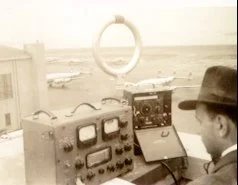.JPG) Magnificent, don't you think? This is my version of the ET-1 or FETer. It is an HF transceiver using only one active device -- a single MPF-102 Field Effect Transistor. I didn't have a 4 pole Double Throw switch in the junkbox, but I did have a 4PDT relay, so I used the relay. So far I have only built the receiver. It is working nicely. I was listening to German and Polish stations on 80 meter CW this morning.
Magnificent, don't you think? This is my version of the ET-1 or FETer. It is an HF transceiver using only one active device -- a single MPF-102 Field Effect Transistor. I didn't have a 4 pole Double Throw switch in the junkbox, but I did have a 4PDT relay, so I used the relay. So far I have only built the receiver. It is working nicely. I was listening to German and Polish stations on 80 meter CW this morning.I had always wanted to build W2UW's ET-1... I've been reading in "Empire of the Air" the inspiring account of Armstrong's invention of the regen receiver... Then, along came SPRAT 137 and G3XBM's FETer. I could no longer resist. Solder was melted.
It is great fun to listen to 80 meters and realize that the only thing between you and the ether is one small FET (you can see mine standing proudly atop the relay!) . Its a lot like using a crystal receiver. That one FET is serving simultaneously as an RF amplifier, mixer and BFO!
On to the transmitter! Thanks to OM Armstrong, to Glen (W2UW), and to Roger (G3XBM).












.JPG)
